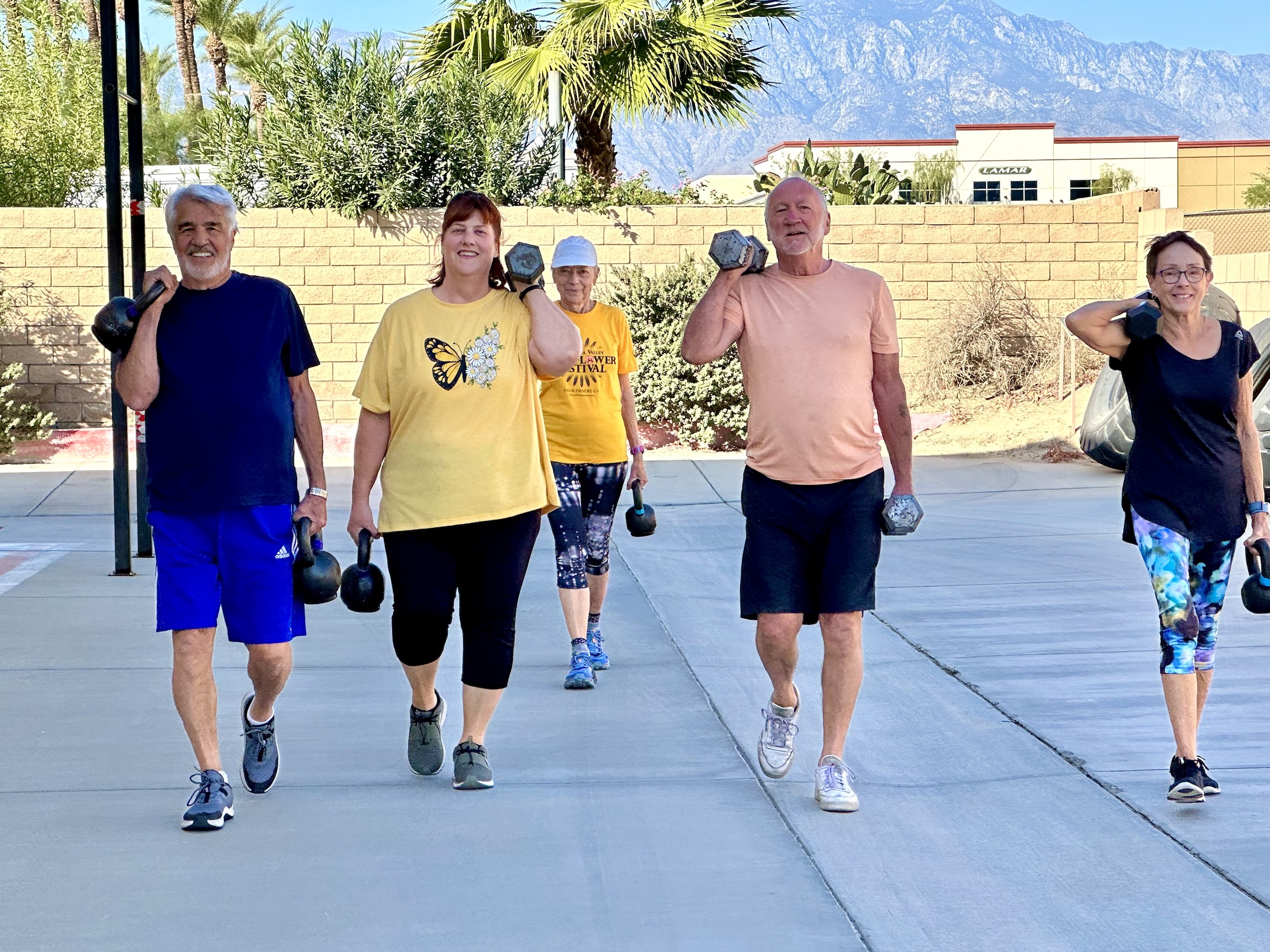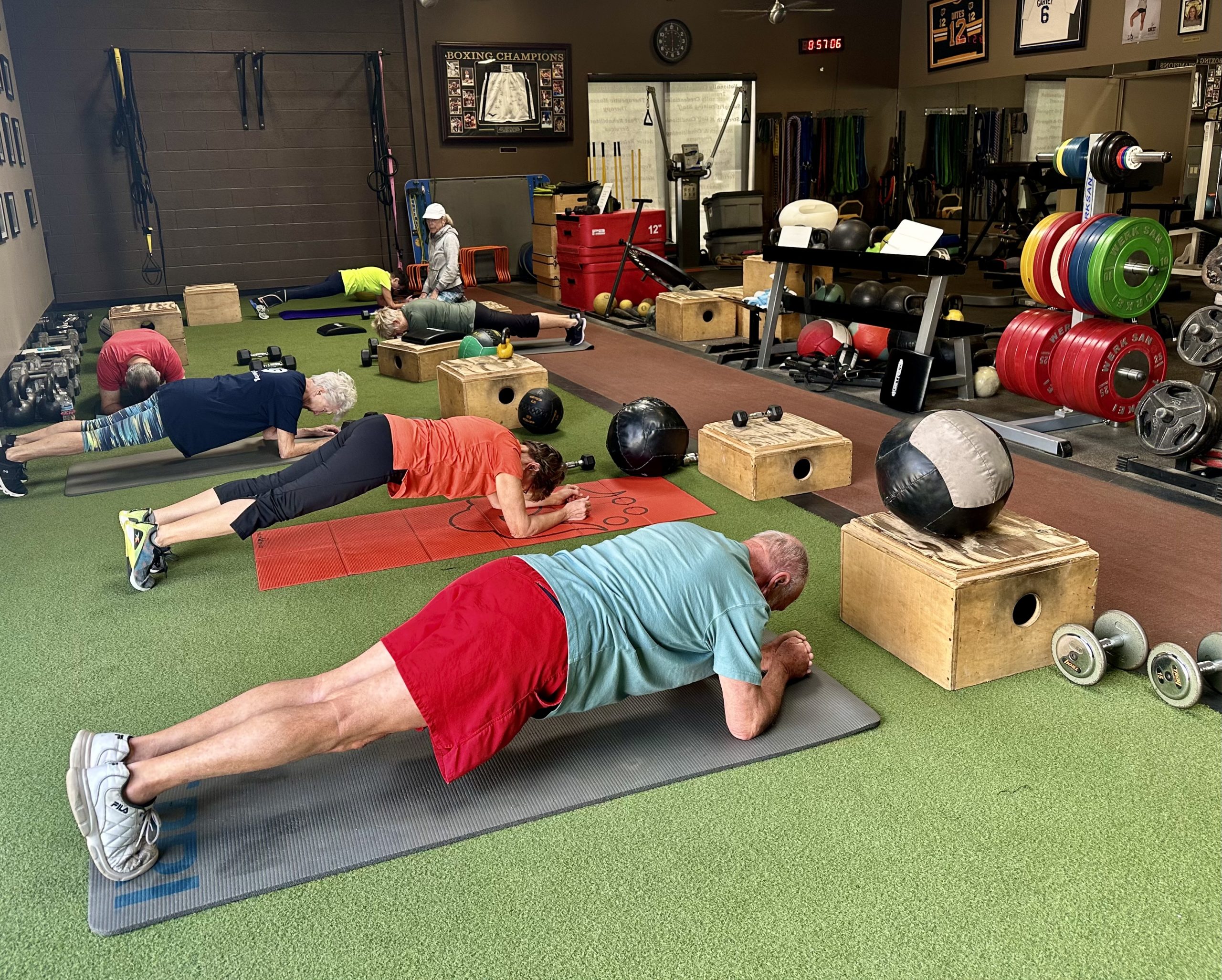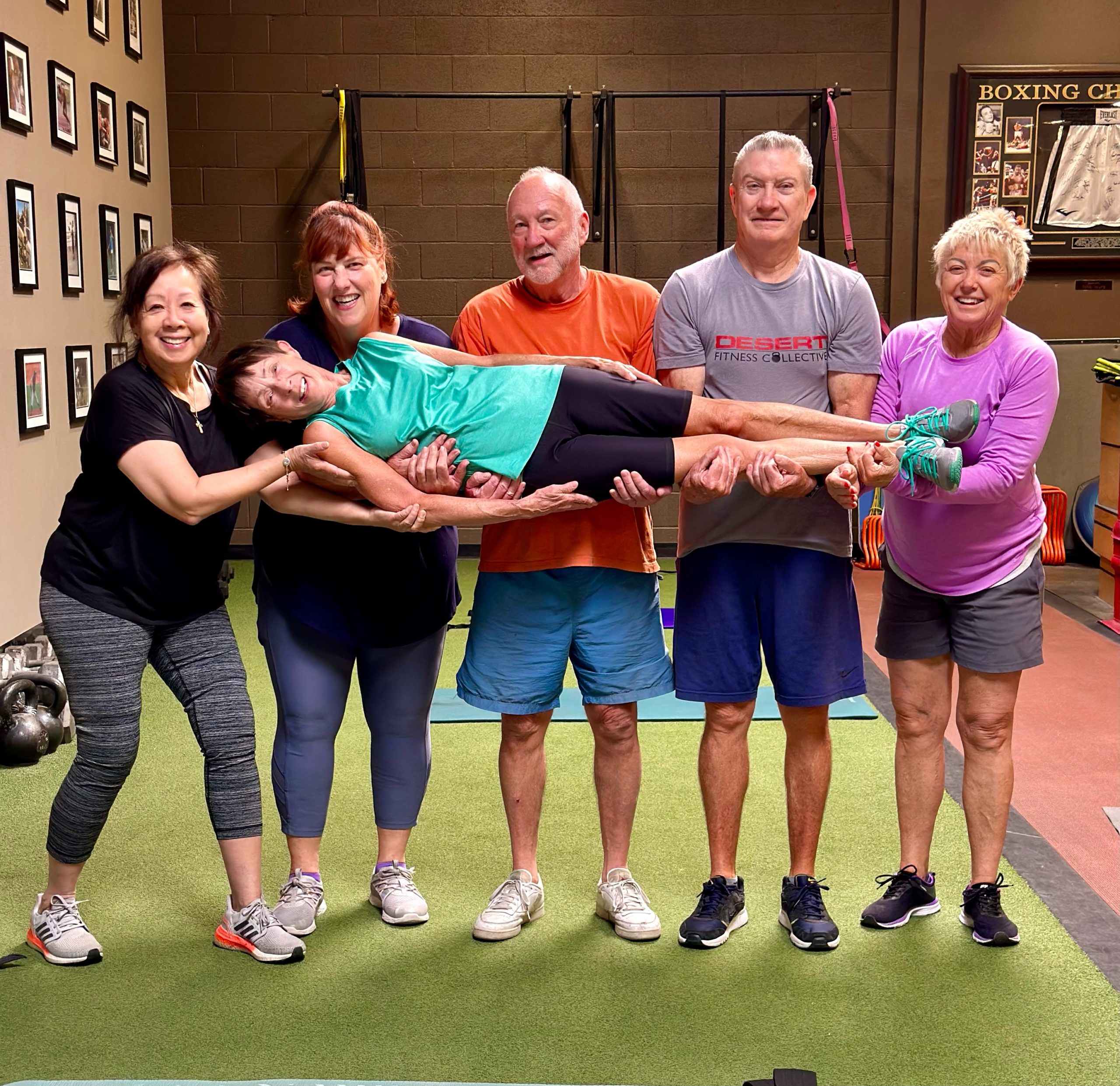We live in the golden age of connectedness. Twenty-three billion text messages are sent worldwide daily; 333 billion emails; 4.8 billion users spend an average of two hours and 24 minutes on social media each day. Yet, we’re lonelier than ever, and the growing prevalence of loneliness is more than just sad. It’s a serious health issue. Now for the good news: There is a place where you can treat the whole problem all at once. In fact, there are 13,000 of them all around the world.
It was 1999.
Steve Wheate, 51 at the time, had just been chatting with his wife, Katherine — Kate, as those closest to her know her. She’d stopped by his office in Los Angeles County to say a quick “hello” before she went shopping for shoes. She wanted new boots.
About 10 minutes later, Wheate got a call. The woman on the other end of the line introduced herself as a counter assistant at JCPenney.
“Your wife is here,” the woman said, “and she has some kind of a problem.”
Store workers had already called 911 by the time Wheate arrived. He drove behind the ambulance to the hospital, where they waited eight hours for Kate to be seen. By then, the damage had been done.
The stroke — labeled “severe” by doctors — rendered the previously active, vivacious 49-year-old unable to walk, work, or even feed herself without help, and thrust Wheate into a forevermore role as not only husband but also caretaker.
“It is just excruciating and depressing, for both her and for me,” Wheate, now 75, said.
Unable to leave his wife for more than a few hours at a time, Wheate switched from full- to part-time work. In the years after her stroke, Kate also suffered from breast cancer.
With no home help or nearby family or friends to offer support, Wheate was on his own, a few hours of work here and there his only respite from constant caretaking. His depression deepened after fully retiring in 2019, effectively slashing his social connections from few to next to none.
“It has been a trial beyond belief,” he said. “I understand now why people put a bullet in their head or put themselves to sleep.”
When Wheate began contemplating a similar end, he knew he needed a change.
“I needed something to pick me up and get me out of the house and interact with people,” he said.
So he started CrossFit.

Steve Wheate (second from right) found a much-needed social outlet in CrossFit after retiring from work.
We live in the golden age of connectedness.
Twenty-three billion text messages are sent worldwide daily; 333 billion emails; 4.8 billion users spend an average of two hours and 24 minutes on social media each day.
Yet, we’re lonelier than ever.
In the United States alone, more than one-third of adults 45 and older report feeling lonely, and almost a quarter of those over 65 are considered to be socially isolated. Up to 43% of U.S. adults describe their loneliness as “frequent” or “intense.”
It makes sense. As we age, we tend to lose the people, places, and things that bring us together the most. Children grow up and move away; careers come to an end; health declines and activities once cherished are by necessity abandoned.
But the young aren’t immune, either. A 2018 survey of more than 20,000 U.S. adults found that people aged 18-25 report the highest levels of loneliness — and that was before the COVID-19 pandemic.
Many experts speculate the loss of a “third place” is, at least partially, to blame. In the pre-digital era — and especially pre-COVID-19 — most people divided their time between home, work outside the home, and a third social locus: church, a favorite watering hole, a weekly club.
Now, many of us live at home, work at home, exercise at home, and socialize digitally at home. And with solitary living on the rise — 27.6% of U.S. households were single-person in 2020 — a quarter of Americans interact with others primarily through screens.
The growing prevalence of loneliness is more than just sad. It’s a serious health issue, with social isolation a significant determinant of poor health.
It’s a complex issue. For many, it is poor health — such as that associated with aging or chronic disease that reduces mobility or activity levels — that leads to loneliness and isolation.
But it works the other way around, too: Socially isolated people statistically exhibit poor self-care. For example, they’re more likely to smoke and suffer from eating disorders, and less likely to exercise.
There is a direct association between loneliness, coronary heart disease, and stroke mortality — and not just because those at risk for such things are more likely to be socially isolated, such as the elderly or hospitalized. Data also shows a connection between social isolation and allostatic load, or damage to the body resulting from chronic stress, as indicated by inflammation and neuroendocrine and cardiovascular markers.
Loneliness has also been shown to alter cellular function, increase cortisol and vascular resistance — the amount of force exerted on circulating blood — and promote incidence of Alzheimer’s disease, stroke, and hypertension, in addition to being linked to all-cause mortality.
We already know most interventions for chronic disease focus on symptom management rather than addressing the root problem. Otherwise, heart disease wouldn’t be the world’s leading cause of death. And if basics like sound nutrition and exercise take a back seat to prescriptions and injections, who’s going to recommend making friends as a health intervention?
But there is a place where you can treat the whole problem all at once. In fact, there are 13,000 of them all around the world.

Desert CrossFit is a seniors-only affiliate helping athletes 60 and older maintain and improve their fitness and functionality.
It is indisputable that CrossFit dramatically and effectively improves physical health.
In countless individuals around the world, functional movements performed at high relative intensity, in conjunction with a diet of meat, vegetables, nuts, seeds, some starch, little fruit, and no sugar, has reversed Type 2 diabetes, hypertension, obesity, and more. It has had a measurable impact on biomarkers related to chronic disease across the U.S. CrossFit gym members have even reported that it reversed the symptoms of Parkinson’s disease.
But what makes these results even more potent — and lasting — is that they are forged in the context of community.
It begins simply enough: Most people who work out in CrossFit gyms attend the same class at the same time of day with the same people. Familiarity turns to friendship; friendship to something like kin.
“When you push yourself to your limit, when you work right at your edge, it isn’t always pretty,” writes Nicole Carroll, CrossFit’s Chief Brand Officer. “Your tidy, protective layers go out the window. You let people see who you really are. This is true vulnerability, raw and real.”
Workout buddies become the people who help you move house. Who support you when tragedy strikes. Who celebrate your successes and pick you up after your failures.
The gym becomes a second home — that missing third place — and even if you move, you’ll have ready-to-go friendships waiting for you at the next CrossFit affiliate you find.
“Authenticity, humility, respect, belonging, camaraderie — no wonder this culture flourishes,” Carroll continues. “No wonder tight, lifelong bonds form. When we show up honestly and imperfectly and stretch ourselves to our limits; when we celebrate each other, when we succeed and pick each other up when we fall, community is a natural outcome. A community that extends beyond the walls of the gym — just like the results we gain from our efforts within it.”

Wheate (center) and fellow Desert CrossFit athletes enjoy fun and fitness in equal measure.
In 2020, at 72, Wheate joined Desert CrossFit in Palm Desert, California. Owner Cheryl Cohen opened the affiliate in 2007; in the last few years, it’s become a seniors-only gym with members as young as 60 and as old as 83.
They go on hikes. They go for lunch after class. They celebrate holidays and go to concerts together. Most are retired, several now live alone after losing spouses. All have found new friendships and a sense of joy from working out together.
“We are a very friendly group,” Wheate said.
He initially joined the gym to regain the physical fitness he’d lost after so many years doing little but care for Kate — and he did. After one month of attending CrossFit classes three times per week, Wheate cut 10 minutes off the time of his initial fitness assessment, a workout involving rowing, sit-ups, and air squats. He’s also lost 10 pounds since then.
But the most potent result of his three years of CrossFit training, Wheate said, is having meaningful relationships and connections outside the home again.
“It was a big boost for me,” he said. “It was great getting out and meeting people, and doing a bit of physical stuff and then chatting and laughing and joking again, which I’ve had very little of that for the last several years.”
Although life is not perfect — Kate now suffers from kidney failure and Wheate was recently diagnosed with prostate cancer — Wheate feels more equipped to face the challenges that come his way.
“I shudder to think where I would be if I hadn’t (started CrossFit),” he said. “I would have been an older, even more out of shape, unhappy blob with no future to look forward to.”
He continued:
“It changed my life, because my life had changed from being really, really good to really, really freaking terrible beyond belief back to quite bearable, and I can function again,” he said. “And that’s what it’s done for me. CrossFit at least dragged me up out of that gutter and put me back on my feet.”
Photos courtesy of Desert CrossFit.
About the Author
Brittney Saline is Senior Writer and Editor for CrossFit, LLC. Previously, she was a writer and editor for the CrossFit Journal. She’s been sharing powerful stories from and for the CrossFit community since 2012, covering topics ranging from problems with healthcare and Big Pharma to CrossFit’s potential for reversing symptoms of Parkinson’s disease to discourses on femininity and musculature. She lives in Minneapolis, Minnesota, and her favorite CrossFit workouts feature lots of heavy lifting. Got a story to share? Email Brittney here.

Loneliness Is Making You Sick. CrossFit Can Help.